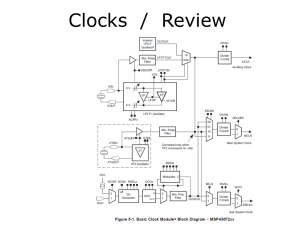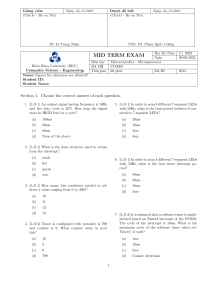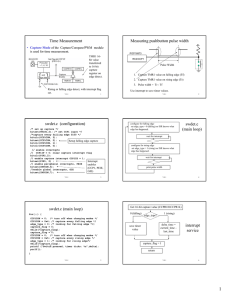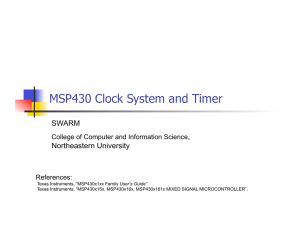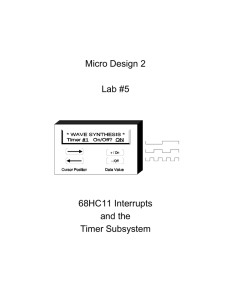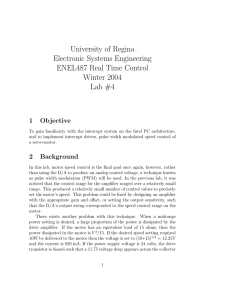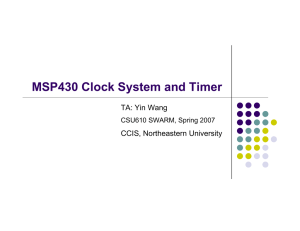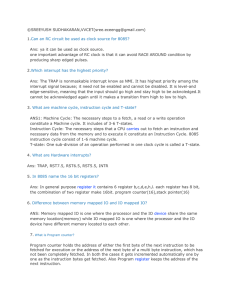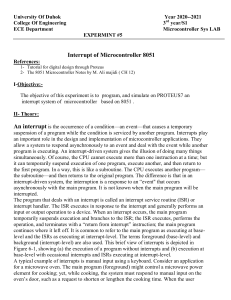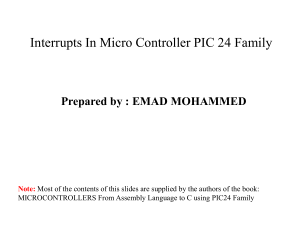The RealTek timer-count A look at how we could utilize the
advertisement
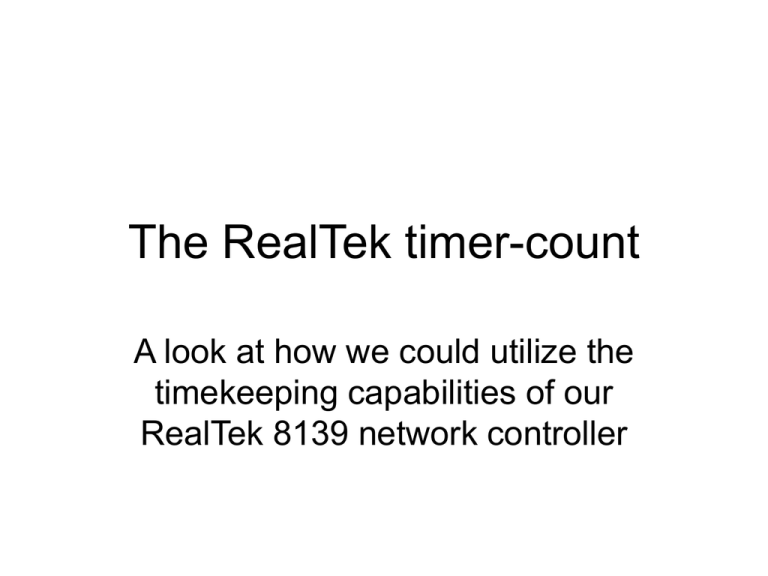
The RealTek timer-count A look at how we could utilize the timekeeping capabilities of our RealTek 8139 network controller The Timer Count Register 32-bits 0x48-0x4B TCTR How it works: This register may be read at any time. Its value steadily increments, at a fixed frequency. If any value is written, the register is reset to zero. The Timer Interrupt Register 32-bits 0x54-0x57 TimerInt How it works: This register may be read or written at any time. Its value is initialized to zero by a reset command. So long as it’s zero, no timer-interrupt is generated. If any nonzero value is written, the ‘timeout’ flag in the Interrupt Status register will be set as soon as the TCTR becomes equal to this TimerInt amount. Registers IMR and ISR 16-bits 0x3C-0x3D T i m e O u t 14 0x3E-0x3F T i m e O u t 14 Interrupt Mask Register (read/write) (Bit: 1=enabled, 0=masked) 16-bits Interrupt Status Register (read/only)* (bit: 1=active, 0=inactive) Writing ‘1’ to an active bit in IntStatus clears the active condition In-Class Exercise • Use our ‘nictimer.c’ device-driver, and also our ‘2seconds.cpp’ program (plus your knowledge of arithmetic), to determine how rapidly the nic’s Timer Count Register will be incrementing • Compute the expiration-value you should write to the TimerInt register in order that a task will be awakened by a timer-interrupt after enough time has elapsed for a maximum-size packet to be transmitted








